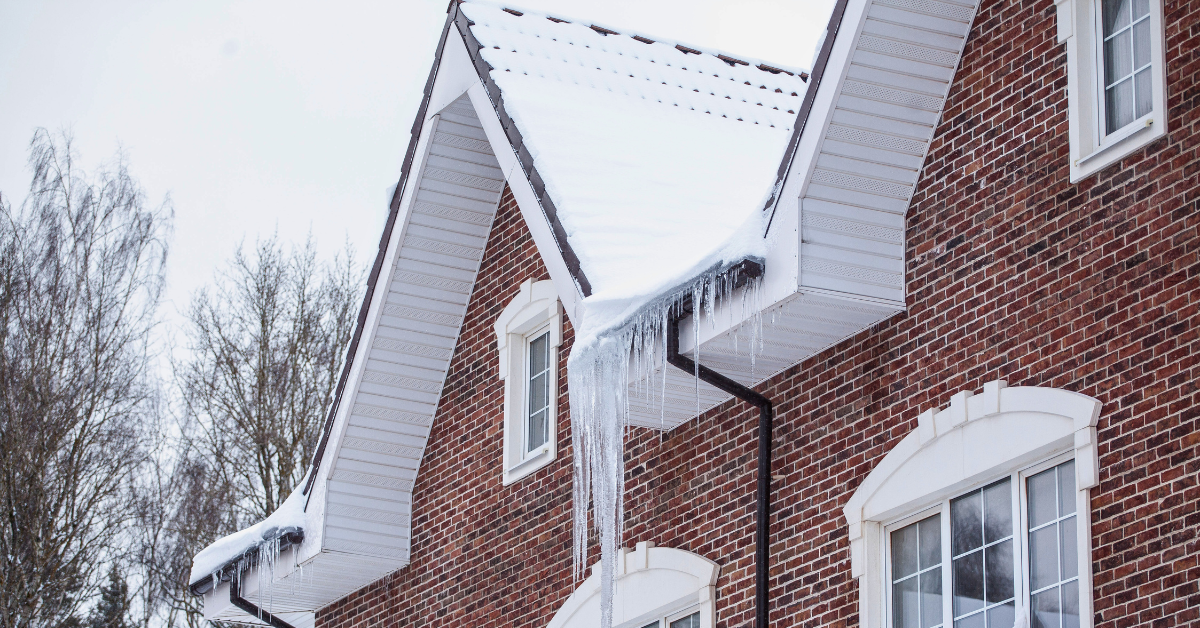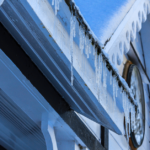Home ownership can be both a blessing and a curse. It’s great to have a place you can call your own. You don’t need anyone’s permission but your own to repaint the living room, renovate the kitchen, or redo the landscaping. But with that freedom comes the responsibility of maintenance, of keeping a watchful eye on the things that can do damage to the home you love; roof ice dams are one of those things. These formations of ice along the edges of your roof can cause significant damage to your home in the form of, for one thing, gutters collapsing from a weight they were never intended to carry. Fortunately, with some proactive measures, you can prevent ice dams from forming and protect your roof, attic, and home from costly repairs. Here’s how.
1. Maintain a Consistent Roof Temperature
An ice dam is a buildup of ice that forms along the eaves of your roof, typically after a period of heavy snow. The primary cause is warm air escaping from the attic, which melts the snow on the roof. This melted snow then flows down the roof, but when it reaches the colder edges it refreezes and forms a barrier of ice. As this process continues, more snow melts and more ice builds up, creating a dam that prevents water from draining off the roof. By maintaining a consistent roof temperature, you can prevent this truly vicious melting-and-refreezing cycle.
2. Improve Attic Insulation
Proper attic insulation is one of the most effective ways to prevent ice dams because it’s one of the most effective ways to maintain a consistent roof temperature. Insulation helps keep warm air inside your living space, where it belongs, and prevents it from escaping into the attic. This keeps the roof cold, reducing the chance of snow melting and refreezing at the edges. Common insulation materials include fiberglass batt insulation, spray foam, and cellulose. Homeowners should aim for a high R-value (the higher the R-value, the better the insulation) to ensure adequate thermal resistance. Adding insulation to the attic floor can also help prevent heat loss.
3. Seal Air Leaks
Air leaks from your attic to the outside are another cause of the kind of heat escape that can lead to ice dam formation. Common places from which warm air can escape include around chimneys, vents, light fixtures, and electrical outlets. If warm air escapes through these gaps, it will increase the temperature of the roof, leading to melting snow and ice dams. Sealing such leaks with caulk or weatherstripping is an effective way to reduce heat loss. Pay attention to areas where ducts, pipes, or wiring enter the attic, as these are often sources of heat leaks.
4. Ensure Proper Ventilation
Adequate attic ventilation is another crucial factor in ice dam prevention. Roof and soffit vents allow air to flow through the attic, helping to maintain a consistent temperature across the roof. Without proper ventilation, the attic can become too warm, leading to snow melt and ice formation. Ensure your attic has enough intake (soffit) and exhaust (roof) vents to allow for good circulation, and check for any blockages, such as insulation or debris, which can prevent it.
5. Clear Your Gutters
Clogged gutters can exacerbate ice dams by trapping melted snow and preventing it from draining away from the roof. As the water accumulates in the clogged gutters, it can freeze and form an ice dam. To avoid this, it’s essential to keep your gutters free of debris, especially before the winter months. So be sure and clean your gutters regularly (or have a pro do it). You can also consider installing gutter guards to keep leaves, twigs, and other debris from building up. This will help ensure there’s proper water drainage and reduce the risk of ice dam formation.
6. Use Roof-Safe Ice Dam Prevention Products
If you live in an area with heavy snowfall, you might want to consider using roof-safe ice prevention products, such as heated cables or ice melt tablets. These tools can help melt snow and ice along the roofline. When using heated cables, it’s important to follow the manufacturer’s instructions for installation. They should be installed properly to avoid electrical hazards (again, turn to a pro if you’d rather not tackle something like this yourself), and they should never be used as a substitute for addressing the underlying issues of heat loss or poor ventilation.
7. Be Prepared For Winter Maintenance
Even with all these preventative measures in place, snow accumulation can still occur, and an ice dam may still form. One way to protect your roof is by using a roof rake to remove snow safely from it. Roof rakes with long telescoping handles can allow you to reach the roofline without the need to climb onto a ladder, reducing the risk of injury. However, it’s important to exercise caution when removing snow from your roof. Avoid using metal rakes, as they can damage shingles, and never attempt to remove snow from the roof if you’re unsure of how to do it safely. As always, if you’re unsure, it’s always a good idea to call in a professional roofer.
Ice Dams on Roof: Get Them Before They Get You
Ask the average homeowner if the maintenance aspects of homeownership occasionally make them want to be renters—with a landlord a phone call away for any unpleasant jobs that need doing—and you may get a hesitation of consideration, but in the end they’ll likely choose to take the bad with the good. And truly, ice dam prevention isn’t so daunting of a task in the end. With a combination of good attic insulation, proper ventilation, the sealing of leaks, and regular maintenance, you can protect your roof from the costly damage that an ice dam can cause.
Unsure about how to address these issues? Need the advice of a pro? PJ’s Roofing is here to help. Our expert team can come out and make sure your roof stays in top shape year-round.














